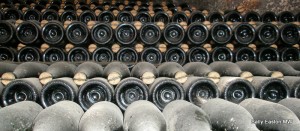Crémant de Savoie
A version of this article first appeared in the November/December 2014 issue of Winestate magazine.
France has a new crémant appellation. The alpine region of Savoie (Savoy) east of Lyon, has been given permission to make traditional method sparkling wines under the Crémant de Savoie moniker. Fruit from the 2014 harvest can be used, and the bubblies marketed from December 2015, after the wines have spent at least 12 months maturing.
Crémant is a special category of sparkler. It is a precisely (legally) defined umbrella term used to describe any traditional method sparkling wine made in France, but outside the region of Champagne.
The maturation time is important. As with other crémants, a minimum 9 months ageing on lees is required. It typically takes time for autolytic flavours to begin to emerge which is why traditional method sparkling wines in the EU have minimum stipulated time on lees. Autolytic flavours include the aromatically spicy, yeasty, creamy, doughy, bready, pastry, toasty, nutty etc. notes.
The new Crémant de Savoie is actually France’s eighth crémant appellation to be created. Several prominent, and less prominent, French regions have their own sparkling wine appellation: Alsace, Bordeaux, Burgundy, Die (in the Rhône valley), Jura, Limoux and Loire.
It’s not just the length of maturation time on lees that is legislated in the European Union. As well as maximum yield, planting density, hand harvesting, among other things, the grape varieties allowed to be used are also controlled. Conveniently, for the bubblies, the permitted grape varieties are invariably the ones that the region uses for its still wines (which are also controlled). Thus Crémant de Bourgogne is typically regarded as a ‘Champagne lookalike’ because it uses its region’s still wine staples chardonnay and pinot noir, which are also the mainstay grapes of Champagne. It can also use other regional grape varieties including aligoté, pinot blanc and gamay.
To make it more complicated, or perhaps more regionally representative, permitted grape varieties are often stipulated in specified proportions. Thus the new crémant appellation of Savoie stipulates a minimum of 40% of the blend must use jacquère, and at least 60% of the blend must use jacquère and altesse. The balancing 40% can include aligoté (also found in Burgundy), chasselas and chardonnay. Any black grapes used must comprise less than 20% of the blend.
For the record:
1. Alsace can use: auxerrois, chardonnay, pinot blanc, pinot gris, pinot noir and riesling.
2. Bordeaux can use: semillon, sauvignon blanc, muscadelle, cabernet sauvignon, cabernet franc, merlot
3. Burgundy can use: pinot noir, pinot gris, pinot blanc, chardonnay, gamay, aligoté
4. Die can use: clairette, aligoté, muscat à petit grains
5. Jura can use: pinot gris, pinot noir, poulsard, chardonnay, savagnin
6. Limoux can use: chardonnay, chenin blanc, mauzac and pinot noir;
7. Loire can use: chenin blanc, chardonnay, cabernet sauvignon, cabernet franc, pinot noir, grolleau.
8. Savoie can use: aligoté, altesse, chardonnay, jacquère, gamay, pinot noir




